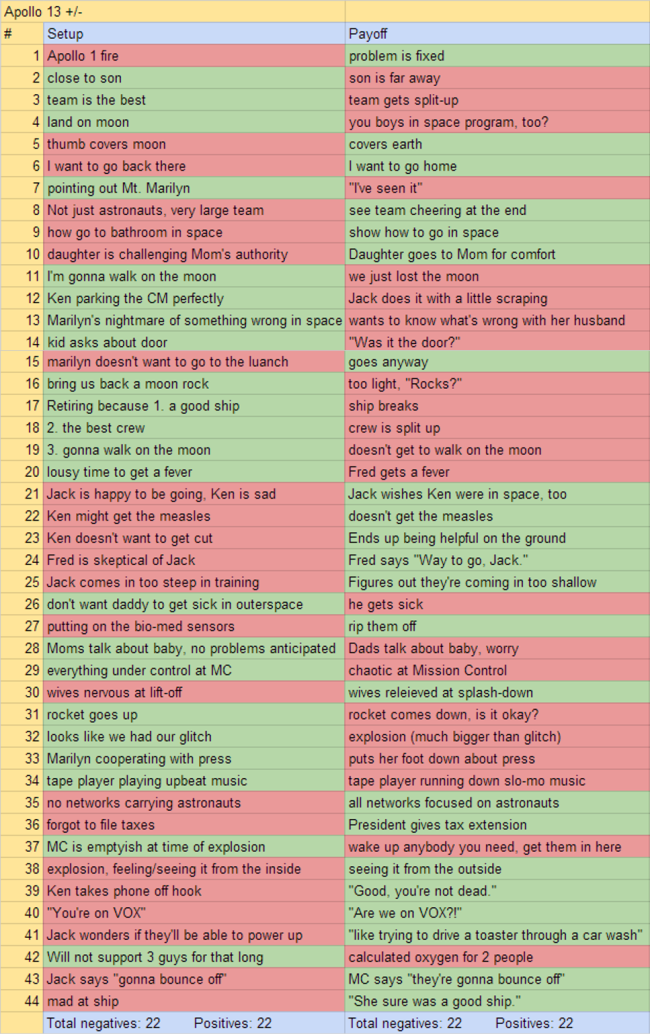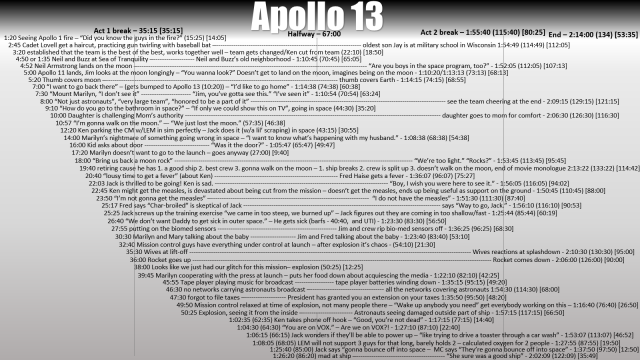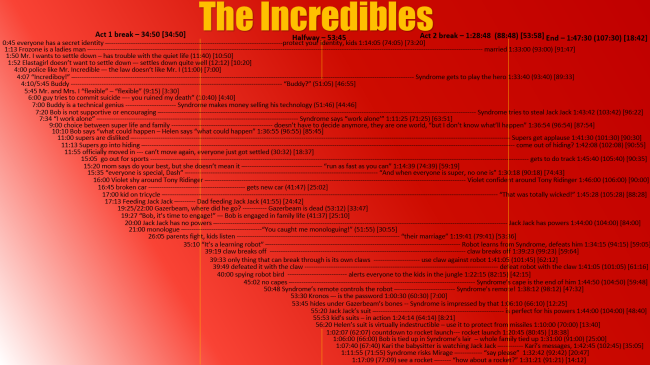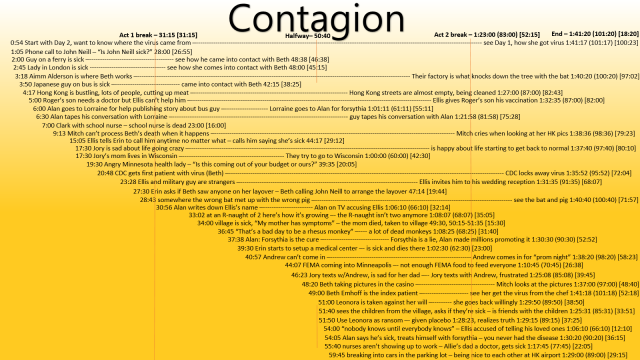Trying something new this week! Here’s the setups and payoffs from Apollo 13, but categorized into positives and negatives. A few of them were pretty hard to categorize and with those I just went with my gut, but really this is an experiment in trying to work out a theory that in order for a thing to be a setup and payoff, one has to be a positive and one has to be a negative.
Here is that for this movie:
If nothing else, this helps me to illustrate why this feels like such a neutral story. Back to the Future, on the other hand, is about mostly negatives turning into positives, which is what makes it a feel good movie. Apollo 13 is great, but people don’t tend to feel dramatically uplifted — glad to be alive, maybe, but not super pumped the way they do after Star Wars or Toy Story or something like that. This is more like Contagion, we’re just glad people managed to live ’til the end of the movie.
Here’s the setups and payoffs for Apollo 13, in case you wanted to compare charts:
Whelp, there you go. Let me know what you think.



